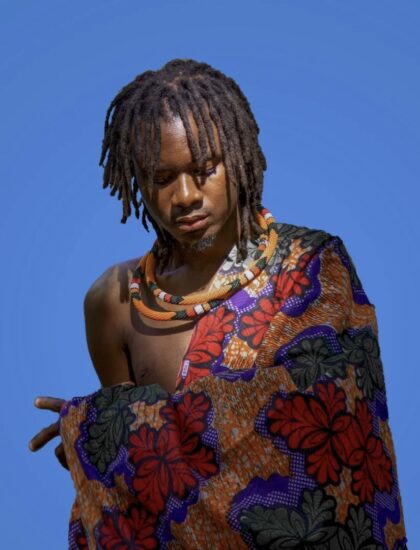I always knew my granny had it, but nobody in my family ever wanted to talk about it. It was a taboo as per the society standards. Yet, Me, myself and I habitually have had that monologue out loud whenever I find time to drag our old bamboo stool to the wall and hang off the ten-piece photo frame with family pictures to gaze at the elegant faces of our extended family. It was my father, mom, siblings, cousins, aunties, uncles and grannies from both sides.
As proud as I always was, none of the photos on the surface ever impressed me with both envy and shock. Even the one of a young fubsy me with a gigantic toy of an antique vintage car couldn’t do that. The one that took me to that place was the studio photograph of my granny from my pope’s side in her mid-vicenarian years. The piece never made it to the front display of all the pictures that mattered at the time, for a lack of couth-iness and refinement in gogo’s sense of costume. Rather, it was stuffed inconspicuously behind a dozen of faceless, yellowed photos, simply forgotten or considered trash but could never be thrown away.
The black and white snap was taken a few months after she’d given birth to my father. In it, she stands black, fashionable, spiritual, sexy and sensual and still had the exuberance of youth. She is not a girl anymore, and she never would be again. She is wearing a Pendleton wool pleated reversible mini-skirt an inch away from her knees, a crochet pattern beautiful lace blouse and white classic Mary Jane shoes with a single strap across the vamp, round toe, and short Cuban heel. She’s wearing an afro hair with pride and her face is free of make-up. Akimbo she posed, she held herself like her upper spine was rubber with her shoulders seemingly falling forwards. She had that movie star look, not overly tall and willowy, but more like an action star. Her curves fill out just a little, just enough to give her her adult shape. She isn’t just flawless in her bone structure; her skin was like silk over glass and she radiated an intelligent beauty.
Although it was restricted for obvious reasons, this picture was iconic and my favourite in all of our collection. While my grounded Pentecostal family found it morally repugnant, I felt no way manipulated or debased by it, the same way D’Angelo’s Untitled (How Does It Feel) did not provoke an ounce of an innocent me.
With growing up comes a lot of changes and moving around. The picture eventually went missing well before I’d scan or reproduce a copy of it. To me, it’s history lost forever. My kids would never get to see what an eccentric black woman their great grandmother was, at least on paper.
It didn’t feel much of a loss back then up until I attended the 2nd edition of Women, Wine and Words Festival at Theatre In The Park in Harare where Kenyan poet-playwright and writer Sitawa Namwalie expounded on her “Our Grandmother’s Miniskirts” Exhibition series.
The visual concatenation is a collection of dandy brown women from Kenya who wore miniskirts, hot-pants, drain pipes, peddle-pushers, bell-bottoms, platform shoes, afro-hair styles in the 1960s, 1970s and 1980s. The project seeks to start a creative dialogue that will interface photography with diverse topics such as the right to bodily autonomy to promote awareness of sexual harassment. With it, Sitawa thought she could argue her case against men who strip women for dressing “scantily” by showing them how ladies dressed up back in the day.
Curated by Sitawa with help from Basil Ibrahim, Kenyans in particular and Africa in general will walk down memory lane by collecting pictures of their mothers and grandmothers wearing body-shaping and sometimes body-revealing clothes to speed up discussions on the free choice of dressing and why it shouldn’t be a recipe for sexual harassment.
Sitawa told EnthuseMag that she conceived the idea three years ago when she was confronted by Rwandese amid incessant reports of sexual assaults on Kenyan women owing to their choice of apparel.
“I got the idea in 2016 while I was working in Rwanda on a project for the World Bank. It was around the time that men were stripping women in Nairobi in public spaces, claiming their style of dress was inappropriate,” she said.
She added that the high-handed men also raped the women, filmed the process and then circulated their videos across the digital spaces with impunity.
“The way people, particularly men, were responding on social media was as if it was a wonderful event, a picnic.”
Shamefully, Rwanda nationalities were shocked by these practices.
“They asked me, ‘What’s wrong with your Kenyan men? Why aren’t they protecting their women?’” said Sitawa.
It was then that she began thinking about the virtue of women’s bodies and how, historically, women had worn clothes that did not even cover their kneecaps, let alone their bosoms, but they hadn’t been assaulted for it. It had been considered fashionable at the time.
“I thought that particularly in the 60s and 70s, women used to wear extremely short clothes and the grandfathers of some of these men who are stripping jeering women did not do the same thing.”
A seasoned woman in the field of advocacy, it donned to her with a sudden swiftness that through art, she could pass a message without having to talk much. She got curious to find out if Kenyans had old photos of their mothers and grandmothers in their youth and if they shared them with her, would she be able to substantiate that of yore women followed fashions that included attire that matatu/kombi/mini-buses touts today claim is only worn by scarlet women.
Sitawa said since the call was made the responses have been overwhelming and the crowd-sourced project has reaped a plethora of charming stories of Kenyan women whose life histories would have been forgotten if it wasn’t for the mini-skirt project.
“The response has been overwhelming. After they have sent me the photographs, I’ve asked them to also send stories to accompany their photos,”
she added, emphasising that the aim was to capture a history of ordinary people and to share this history through physical exhibitions, an online archived exhibition, and a coffee-table book.
When arranged chronologically, the photographs begin with one from 1945 of a woman named Gatoro Ndugi M’Chabari, dressed in the traditional dress of the Tharaka ethnic community. The type of dress she wears was worn by married women. The unmarried ladies had their breasts left uncovered. Gatoro’s nephew Simon Mitambo submitted the photograph and shows her in what can only be described as a brief miniskirt.
In discussing her traditional dress, Gatoro, who is in her 90s now said, although she looked almost naked in miniskirts, “there were no cases of sexual harassment.”

What follows is an exhibition of some of the selected photographs.





Sadly for me, I don’t have my granny’s steamy snap to share with y’all! It was probably torn apart, burnt, washed away by the rains or perhaps it is hiding somewhere in one of the unfrequented family property.
All the pictures were published with Sitawa Namwalie permission.























1 comment